Welcome (or for some of you, welcome back!) to the Speculative Chic Book Club! Thank you so much for joining us on our relaunch in 2020. To say I’m excited about it is an understatement: I’m tickled that every month, a different blogger gets to select a book and lead us in a discussion, and I knew that to kick things off, I had to be the first host. Before we get started, let me share how this will work: each section is clearly marked with a header. Expect spoilers in the section labeled “Discussion.” To skip most of the spoilers, just scroll on down to “In Conclusion.” As an added bonus, you can also find “Recommended Reading” for some similar-yet-different reads, and there’s a poll for you to let us know whether or not you’ve read the book.
So with that in mind, let’s get started, shall we?
This is How You Lose the Time War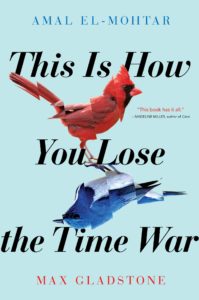 (2019)
(2019)
Written by: Amal El-Mohtar and Max Gladstone
Genre: Science Fiction/Time Travel
Pages: 198 (Hardcover)
Publisher: Saga Press
The Premise:
Two time-traveling agents from warring futures, working their way through the past, begin to exchange letters — and fall in love in this thrilling and romantic book from award-winning authors Amal El-Mohtar and Max Gladstone.
In the ashes of a dying world, Red finds a letter marked “Burn before reading. Signed, Blue.”
So begins an unlikely correspondence between two rival agents in a war that stretches through the vast reaches of time and space.
Red belongs to the Agency, a post-singularity technotopia. Blue belongs to Garden, a single vast consciousness embedded in all organic matter. Their pasts are bloody and their futures mutually exclusive. They have nothing in common — save that they’re the best, and they’re alone.
Now what began as a battlefield boast grows into a dangerous game, one both Red and Blue are determined to win. Because winning’s what you do in war. Isn’t it?
A tour de force collaboration from two powerhouse writers that spans the whole of time and space.
This is a book club discussion, so it will therefore contain spoilers. If you haven’t yet read the book and want to remain unspoiled, please come back after reading!
Discussion
Before we deep dive into the book, I want to take a step back in time and remind us all about my thoughts on this title when we announced the Book Club relaunch back in November:
I couldn’t very well kick off the revamped Book Club without setting the tone, could I? Oh, you mean you want to know why I picked the book! The title alone caught my eye from the very start, and when I read the premise, I was immediately attracted to the idea of two time-traveling agents from opposite sides of a war falling in love. Forgive me, for I have read To Say Nothing of the Dog by Connie Willis and The Time Traveler’s Wife by Audrey Niffenegger, and I’m a sucker for a great time-traveling romance. I really, really hope this fits the bill.
So with those expectations in place, how’d This Is How You Lose the Time War fare?
Well, I’ll be honest: I had to read the book twice. Due to my day job, I’d decided to get an early start and finished reading this book on my Kindle well before we got into the 2019 holiday season. Then I realized that if I sat down to write the review at that moment, I’d have absolutely nothing to say. There are a few reasons for this:
I’ve said over and over on Facebook and Twitter, this book is surreal. I’ve gotten spoiled by very tangible fantasies and science fictions and mixes thereof, which means I haven’t been challenging myself lately with narratives, so not only did I get lulled into the format of the novella (prose, followed by a letter, followed by a point-of-view switch, followed by another letter), but because each letter was discovered in such a unique way and read in such a unique format, I was never able to grasp the shape of the narrative. We have these amazing characters from amazing places: you’ve got the technologically advanced Agency, represented by Red, and then the verdant Garden, represented by Blue. And through their letters, we learn about each side and what they’re capable of, and it’s because they’re so different that we’re left to assume the war is due to that difference.
But I, as a reader, had a really hard time grasping that.
Time travel is always full of timey-wimey whatevers, but as you can surmise from my original expectations, I’m used to time travel in familiar settings: Connie Willis’ To Say Nothing of the Dog is set in the Victorian Era, and Aubrey Niffenegger’s The Time Traveler’s Wife is set in the modern world, both of which are familiar. This is How You Lose the Time War was utterly unfamiliar, even if the periods Red and Blue would be infiltrating sometimes were. Because I couldn’t visualize the individual futures both sides were fighting for, I never picked sides, and after two reads, I suspect that’s the point. It doesn’t matter which future the reader feels should win: the point, of course, is the interaction and relationship between these two spies, between Red and Blue, and how they carve something out of this war that’s meant for only the two of them.
But I didn’t get that on my first read. I finished the book, set my Kindle down, and wished I’d read a hard copy of the book instead. So that’s what I ended up doing: getting a hard copy of the book and reading that for my second pass.
How was that different? For starters, I already knew what I was getting into: I knew how the book ended, I knew the structure, and I knew the characters. So picking it up for the second time allowed me to actually focus on what I was getting, rather than wondering what was next and struggling to visualize what was happening on the page.
So on the second read, I was struck immediately by the crisp, beautiful power of the prose. Consider the opening line:
When Red wins, she stands alone.
Blood slicks her hair. She breathes out steam in the last night of this dying world.
And then, a few paragraphs later:
A tremor passes through the soil — do not call it earth. The planet dies. Crickets chirp. Crickets survive, for now, among the crashed ships and broken bodies on this crumbling plain. Silver moss devours steel, and violet flowers choke the dead guns. If the planet lasted long enough, the vines that sprout from the corpses’ mouths would grow berries.
The imagery is fantastic, and on my second read, I was able to truly appreciate and relish it. My first read, I admit to impatience, letting these descriptions wash over me and furthering my own confusion, because I couldn’t sit still and breathe in the beauty of the book. In this day and age, it’s too easy to rush through.
Moving on, I had a certain amount of fun in reading each section and trying to discover where in history (our history?) Red and/or Blue were. Sometimes I didn’t know until the end of a section (like the Genghis period), and sometimes I was told straight away such as Atlantis. Oh, how I loved this particular section: how it’s despised by both Red and Blue, which is so at odds with the allure surrounding the myth of the lost city.
I was also rather fascinated to realize that we weren’t just dealing with time, but rather with multiverses. At least, that’s how I read it. To think of it all as a single loop of time (such as the Willis or the Niffenegger) invites more confusion than not. Often, references are made to a particular strand’s London, or a particular strand’s Genghis, or a particular strand’s Atlantis, and it’s as if there are multiple versions of all of these things. And I do wonder a bit about that: for two sides that are warring to keep their futures intact, how is it these futures came to be? From what strand did they erupt, or have there always been multiple strands, and somehow, they got crossed? I know I said earlier that the point of this book is not to wonder these things: after all, time travel can be confusing even if you’re dealing with a single loop with no divergences, let alone adding multiverses, but I’ll admit, my nerdy brain wanted more in that regard. In order for these two futures to be at war with each other, they had to start somewhere, which leads to the age-old question, which came first, the chicken or the egg? Dr. Manhattan, from HBO’s Watchmen, would say it’s both, and truly, that’s the concept this novella embraces.
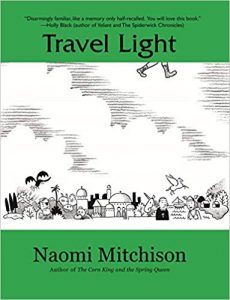 Perhaps I’d have a better grasp to the answers to those questions if I remembered anything at all of Naomi Mitchison’s Travel Light, but unfortunately, all I remember is that I read it. Reading this book made me want to dive into my own shelves to see if I still own a copy, to see how it complements or enhances This is How You Lose the Time War, so if anyone has read Mitchison’s book recently, or at least has a good memory of it, I’d love to hear your thoughts.
Perhaps I’d have a better grasp to the answers to those questions if I remembered anything at all of Naomi Mitchison’s Travel Light, but unfortunately, all I remember is that I read it. Reading this book made me want to dive into my own shelves to see if I still own a copy, to see how it complements or enhances This is How You Lose the Time War, so if anyone has read Mitchison’s book recently, or at least has a good memory of it, I’d love to hear your thoughts.
Now let’s zero in and focus on the main point of this book: Red, Blue, and their love story. I admit, on first read, I didn’t really “get” this as a love story, at least not in the traditional sense of which I was clearly expecting. That said, having read this book twice now, I see that magnetic pull between these two agents, the way they were the best of their respective sides, and how by seeing their adversary as their equal, were able to cultivate something they couldn’t find elsewhere: respect, friendship, and indeed love. The lengths Red and Blue go to save each other, to protect each other, transcends the expectation of a traditional love story. And one of the joys in reading this book twice is getting to see how El-Mohtar and Gladstone build to the climax and weave that moment throughout the book: I loved understanding who the Seeker was the second time around (and why). It’s a completely different experience between first and second read: the first go-around, I thought Red and Blue were compromised. The second go-around, I realized it was Red gathering everything she needed to preserve what is essentially a time loop and in turn save Blue.
I did so enjoy their letters back and forth, specifically their pet names for each other. Having a spouse who’s also a graphic designer, I immediately latched on to “0000FF” as a favorite, though “Red Sky in the Morning” was a delight as well.
Truth be told, I feel like there are so many different ways to read this book. There’s so much to absorb, so much to ponder, so much to explore and enjoy. I loved how every single main character (Red, Blue, and their respective bosses) were portrayed as women, and I loved how utterly normal all of it felt. I loved the utter and wild creativity to this piece, even though at times I felt a little lost during my first read-through.
In Conclusion
This is How You Lose the Time War is ultimately a book that rewards re-reading, and I don’t say that lightly: there are too many books in this world I want to read, and too little time to read them all. That I stopped and made myself re-read this one speaks to the power of the prose and beauty of the story, even if I couldn’t quite consciously absorb it all on the first time around. Even after a second read, my head is still spinning, wondering what clues I missed: there’s such a huge part of me that wonders how many times Red and Blue saved each other; there’s also a huge part of me that wonders what happened between the pages, and how often Red and Blue were truly able to interact outside of their respective letters. It’s a book that requires careful and considerate reading, and I immediately know it’s not to everyone’s tastes, no matter how carefully they read. That said, I’m glad I selected this book: it definitely didn’t fit into my expectations for the piece (honestly, I visualized something like Connie Willis’ time-traveling historians going back and forth in time and running into each other and having an illicit affair), but it’s been a long time since I challenged myself with a new narrative. I can see myself revisiting this yet again in the future, but for now, I want to savor the experience, and I want to hear everyone’s thoughts.
Recommended Reading
To Say Nothing of the Dog by Connie Willis (1998): I’ve mentioned it over and over, and truth be told, after reading Willis’ Doomsday Book and Blackout/All Clear, this one didn’t impress me on my first reading, but that was because the tone was utterly different from what I was expecting, and I don’t seem to do well with Victorian-styled pieces/humor. All of that being said, To Say Nothing of the Dog has the single best kiss I’ve ever read about or will ever read about, and trust me: you’ll know it when you read it.
The Time Traveler’s Wife by Audrey Niffenegger (2015): Bear with me on this, because I read this book over a decade ago, and no, I haven’t seen the film, which either revealed or highlighted the problematic nature of the story (content warning: grooming). But this book still bears a special place in my heart, especially for the way it plays with structure and uses that structure to create the tapestry of this doomed love story. It’s another book that rewards re-reading, and having a physical copy on hand so you can flip back through the pages for those “wait, what?” moments.
- Steel Empires Book #4
Replay by Ken Grimwood (1998): This isn’t really a love story, and one might even argue it’s not even a time-travel story, but in so many ways, it really, really is both. This book caught my eye for its premise, how a man has a heart attack and goes back to his teenage years with the knowledge of his adult self and relives his life. But every time he dies, he goes back in time, only he restarts a little later than he did the time before, slowly inching back to the point of his heart attack. As you can imagine, a person can create quite the life for themselves if they could live the same life over and over and over, and this book was utterly riveting.
Steel Time by J.L. Gribble (2018): Sue me, I’m biased, but I was tickled pink by the fourth book in our very own J.L. Gribble‘s Steel Empires series. While I always enjoy Toria’s point-of-view, to be given a book that focuses on time travel was a sheer delight, not only because that’s when Gribble’s worldbuilding really started kicking in for me, but also because, spoiler alert, there’s a love story! The end of this book really jarred me with just how well-plotted this story (and series!) is, but remember: this is the fourth book in an ongoing alternate history/urban fantasy series, and it is not meant to be read as a standalone.
Participation Poll
February’s Book Club Selection: The Atrocities by Jeremy C. Shipp, hosted by Kristina Elyse Butke on Friday, February 28th!

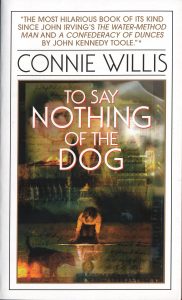
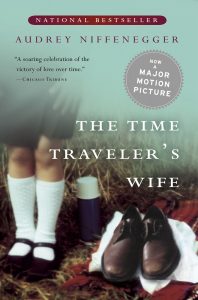
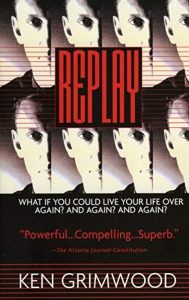
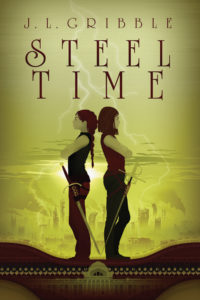
I listened to this one as an audiobook, and the beauty of the prose combined with the intimacy of the letters made it an experience like none I’ve had before. Just going on a long run and having it woven before me.
As for the threads of timelines, I imagined it like this: Actions and decisions lead to lots of different threads, but only bigger or re-enforced changes lead to branches that last very long and most eventually pull back in to larger divergences (the differences being minimal enough that they are obscured or wiped out by larger movements of history). The two sides of the time war are essentially portrayed as the two “end point” probabilities, the last remaining stalks that the various threads feed into, and they are fighting to be the last singular future (to have the other destroyed or folded into their own thread’s history).
My hope at the end of the story is that Red and Blue found their place, but part of me wished that it would lead to (and suspected for a little that their shadow was the result of) their creation of a new major thread…
I still wonder if they aren’t creating their own thread somehow. That ending, THIS IS HOW WE WIN really stuck with me, and I envision that third thread as merging the two existing ones.
You know this sounds awesome as an audiobook – my downfall is that audiobooks put me to sleep!
I was amused to see that you read this book twice, because I did too. I do like to re-read books, but usually much later, after I’ve forgotten at least some of the plot so I can be surprised again. But with this book, I literally finished it, took a minute to soak it in, and then turned back to the first page to begin it again right away. This was partly because it was a library book, and I knew I’d have to return it sooner or later, so I couldn’t wait too long on a re-read. But it was also because of the twistyness of the plot, which made me want to go back through the letters to find and relish the clues of Red’s return to her own past(s). Plus, as you note, the prose is so meaty and beautiful, it really rewarded even an immediate re-read.
It’s been a while since I read this book, so some of the details have faded, but many of the images persist surprisingly well – the physical groundedness of the many forms the messages took, especially. I expect I will return to this book again and again, and find new things in it each time.
I’m glad I’m not the only one who found the value in re-reading this. I’m not normally a re-reader — there’s so many wonderful books out there to read!!! — but I knew I’d have to for this one. I’m so glad I did: re-reading allowed me to appreciate it SO MUCH MORE than I would’ve if I’d just read it once!
I just flat ran out of time, and maybe there was a little reluctance. I’m not a huge fan of betrayal in romantic relationships, and it seemed like this premise was ripe for that. But after reading your review, it sounds like it’s something much wilder and stranger and definitely worth checking out. Twice. I haven’t read anything by El-Mohtar that I am aware of, but I am a Gladstone fan.
I haven’t read anything by El-Mohtar that I am aware of, but I am a Gladstone fan.
The great thing is, the discussion will still be here! Read and come back!!!!
I think a second read-through would let me appreciate the writing better, although I doubt I would. I actually started to get a little impatient, which I simultaneously found ridiculous given how short the book is. I think a part of that is due to knowing where the book was going to lead – aka “Ok, they’re going to fall in love and have to figure that out somehow, I get it,” so I was just waiting for that final “in love, let’s do this,” moment. I also occasionally got my brain scrambled as to whose POV I was in or whose letter I was reading, even though it was very clearly alternating. I think maybe it’s because they started to discuss some of the same things, such as both of them stating that they hated Atlantis.
However, the fact that they stared to blur made me think for a long while that perhaps the “seeker” was in fact them – that Red and Blue were the same person, just from different timelines that had diverged at whatever point that eventually led to Garden on one side and Agency on the other. That eventually they would come to realize this (also why they felt compelled to keep the other safe, etc.) and…I don’t know. Go from there I guess. I was quite surprised when I finally discovered that the seeker was Red doing her best to save Blue.
I did enjoy it, despite my weird impatience. And I would also like to know more about the worlds they each come from.
Er, doubt I would re-read it, not doubt that I would appreciate the writing better!
On my first read, I had the same problem of impatience and blurring of POVs, so when I read it again, I was aware of it and made my self focus. It helped, but the book does seem longer than it is, and to this day if you told me this book was really written by one person, I’d believe it. Red and Blue’s voices were not very distinct from one another, were they?
Interesting theory about thinking they were one and the same person! I considered that!
Honestly for a vast majority of the time I didn’t even ever notice Max Gladstone until nearly the end of the book. xD I wonder who wrote who?
I wonder too. Quite a feat, blending styles so well.
According to a more recent interview, they wrote both together, she wrote the letters and he wrote the actions.
I have read some of El-Mohtar’s short fiction and knew the prose would be chewy and poetic, so this was something I read slowly over the course of an evening. This was last summer so my memory is blurry on details, but I recall closing the book and immediately deciding it would be among my Hugo nominations for the year. I loved the imagery, the secret letters, and the creation of a third future when it was clear neither main timeline was acceptable to their future.
I’d be stunned if this didn’t make the Hugo ballot this year! Have you read any of Gladstone’s work as well?
I’ve read 5/6 of his Craft Sequence so far, and liked 3 of them immensely.
I think I own most of the series (having it on Kindle means I don’t remember well); I remember reading the very first book in the series and loving it, though!
I think you illustrated beautifully that this is a book you must invest in — both time and attention. Having nothing to do with the writing or premise and entirely due to the quirks of my brain and ability to focus, I didn’t get very far into this one, but again, it has nothing to do with the authors’ abilities. In fact, your post made me appreciate the work more and have convinced me to give it another try despite it being difficult for me. I don’t know when I’ll get to it, but it seems worth the work to finish.
If you give it another go, let me know how it works! Maybe read it in sections: chapter/letter and chapter/letter so you get the response from the previous letter each time?
I’m glad I’m not the only one who struggled to follow the plot of this book. I thought maybe it was just me because I was reading it at the same time as a death in the family. I think I would have had a hard time explaining what actually happens in the book even on the day I finished it. I enjoyed the book but I would have loved it if only it had been a little more grounded in a plot.
The writing was gorgeous (there was a section that talked about blueberry pancakes that I loved and should have written down) and I liked the twist that they were both female. However, part of me did picture both of them as Arnold Schwarzenegger falling in love with Arnold Schwarzenegger through time and space. Too much of a Terminator vibe.
I really need to read To Say Nothing of the Dog by Connie Willis because I usually like the same books as Shara. I loved The Time Traveler’s Wife by Audrey Niffenegger, although it has been a while since I read it. *Spoiler Alert* I don’t remember being bothered that he first meets his future wife when she is a child. It seemed like a fairly unique hazard to being a time traveler (i.e., knowing the future) and I don’t recall thinking that his behavior towards her as a child was creepy or inappropriate. I would probably have to read it again to be certain. It didn’t work as a movie. My all-time favorite time travel book is Outlander.
Now that you’ve read it, I recommend giving it another go now that you know what it actually IS compared to expectations (that Terminator visual…. the image that conjured is hysterical!).
I think the issue with Time Traveler’s Wife may be the difference between the book and the movie? I remember when the movie came out there was a lot of conversation about grooming and what it is, and apparently it’s what the movie feel ick. Again, I haven’t seen the movie and it’s been AGES since I read the book, so who knows how I’d feel about it now?
I can’t BELIEVE I forgot to mention Outlander as a recommendation. Thanks for adding it to the list!
I made this a required reading for our high school and created a pseudo curriculum for it (mostly discussion based). I’ve purchased all the texts but I only upload 10 pages at a time. Just about everyone dreaded it, but somewhere around page 50, started getting more intrigued. Now I don’t need a quiz to judge if they’ve read because they ask when the next upload will be. Masticating the book section by section is an utter delight of a reread. I can assure you the third, fourth, fifth, sixth, and seventh times through are each better than any of the previous ones.
I finished the book an hour ago – and was trying to digest all my thoughts. Shara’s review and perspective really helped